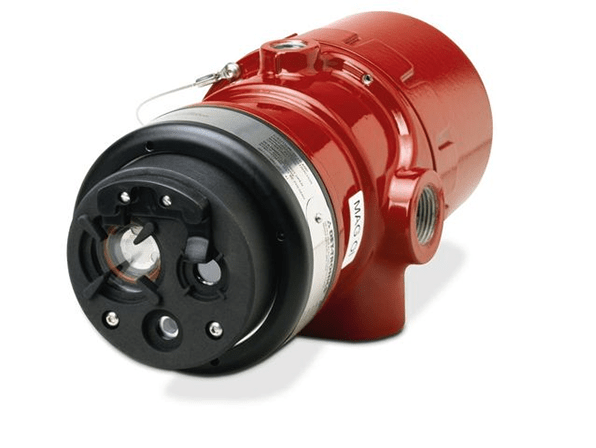
Figure 1: A flame detector.
Burning generates smoke and releases heat, thanks to which, smoke detectors are invented to protect the people and properties. But lights are emitted, too, be it visible or invisible, during burning. And devices can deploy this property of burning to detect fire. And that’s a simple version of how flame detectors work.
According to the different objects it intends to detect, the flame detector can be divided into the following 3 types:
1. Ultraviolet Flame Detector

Figure 2: UV/IR Flame Detector - X5200G
Ultraviolet (UV) flame detectors use ultraviolet photosensitive tubes as sensing elements, and their spectral range is between 0.006 and 0.4 μm. The UV photosensitive tube is a solid pulse device, and the signal it emits is a random pulse whose own pulse frequency is proportional to the frequency of UV radiation.
The UV photosensitive tube has two electrodes, which are generally applied with AC high voltage. When the ultraviolet light radiated to the electrodes is strong enough, an "avalanche" pulse current is generated between the electrodes. Its frequency is related to the intensity of UV light, up to several kilohertz. There is no pulse when extinguishing.
2. Infrared Flame Detector

Figure 3: Fike IR3 & UV/IR optical flame detectors.
The infrared flame detector uses lead sulfide or cadmium sulfide photoresistor as the sensing element, and its spectral range is between 0.7 and 3.2 μm. Infrared flame detectors are also composed of probes, chassis and cooling equipment.
The infrared radiation generated by the primary combustion area of the burner flame is sent to the probe through the optical fiber, converted into an electrical signal by the photoresistor in the probe, and then amplified by the amplifier. The flame signal is sent to the chassis by a shielded cable, and after passing through a frequency response switch and an amplifier, it is compared with a reference voltage (adjustable).
If the flame signal is greater than the reference signal, set the corresponding trigger to "1". The trigger output signal is sent to the flame detection circuit, which makes the red flame indicator light in the chassis (indicating fire).
Conversely, if the probe does not detect a flame, a 3.5s timer is started. After 3.5s, the above trigger is set to "0". The trigger output signal is sent to the flame detection circuit to make the red flame indicator in the chassis go out (indicating fire extinguishing).
3. Visible Light Flame Detector
Visible light flame detector uses photodiodes as sensing elements, and its spectral range is between 0.33 and 0.7 m. It consists of probe, chassis and cooling equipment. The visible light in the furnace flame passes through the lens at the end of the probe, reaches the probe chamber through the optical fiber, and shines on the photodiode.

Figure 4: Honeywell visible light flame detector.
The photodiode converts the visible light signal into a current signal, which is converted into a voltage signal via a logarithmic amplifier. The voltage signal output by the logarithmic amplifier is converted into a current signal by a transmission amplifier, and then transmitted to the chassis through a shielded cable. In the chassis, the current signal is converted into a voltage signal.
The voltage signal representing the flame is sent to the frequency detection circuit, the intensity detection circuit and the fault detection circuit, respectively. The strength detection circuit has two different limits, the upper limit and the lower limit. When the flame intensity exceeds the upper limit, the intensity light is on, indicating fire; when the intensity is lower than the lower limit, the intensity light is off, indicating extinguishing.
Related Info
How do Centrifugal Fans Work?What are Centrifugal Fans Used for?
How to Fix an Air Conditioner Fan Motor?
What is an Axial Fan Used for?
What are the Differences between Axial and Centrifugal Fans?


